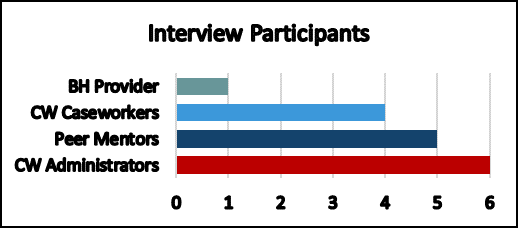In early 2018, the OhioSTART intervention counties trained their employees on the new OhioSTART program and found partner agencies to implement the intervention. The purpose of the interim report is to evaluate OhioSTART thus far and confirm the project is in line with the long-term goals.
OhioSTART created a data use agreement with the Ohio Department of Jobs and Family Services to obtain SACWIS data and is in the process of analyzing that data. A plan for monitoring data fidelity is also in the development. The Needs Portal will be used for information management and data collection.
Front-line workers, supervisors, and administrators of OhioSTART were surveyed. The results of the survey showed there was an increase in collaboration between child welfare agencies and behavioral health agencies. The survey also found that family peer mentors bridged the gap between parents and child welfare agencies. When surveyed about OhioSTART training, some workers felt that they weren’t learning new information. OhioSTART parents were also surveyed. There was some difficulty getting the participants to respond, so it is necessary to continue to offer incentives.
The future for OhioSTART includes assessing the well-being of family peer mentors and the fidelity of interventions across sites, continue to encourage parents to participate in surveys, and monitor changes in child welfare outcomes – especially reunification.
You can find the full Oct 2018 report under “Publications” or click here.
